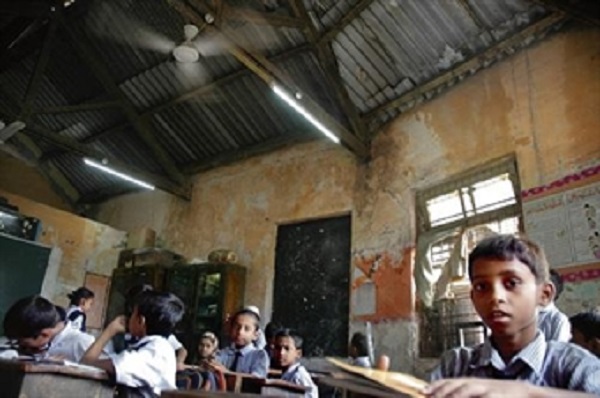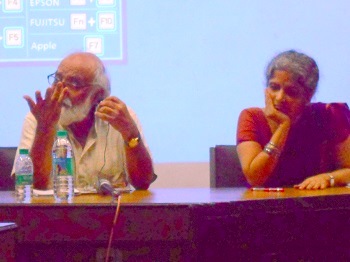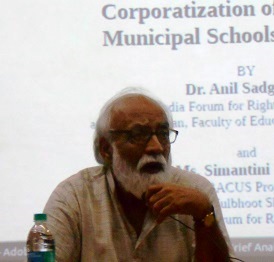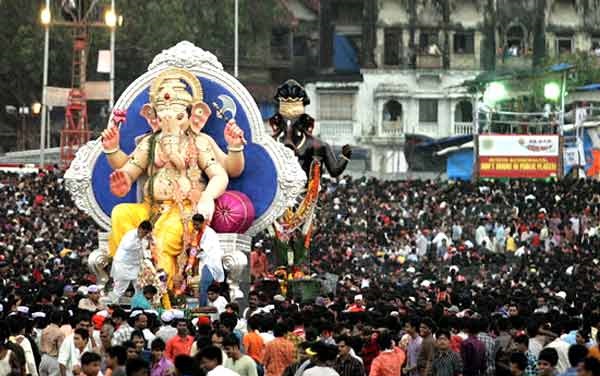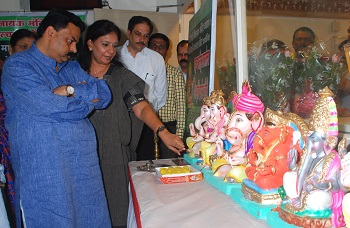Is it possible to feel a stranger’s pain without exchanging a word? Why did her tears move the young boy?
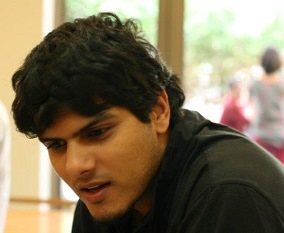 by Siddharth Shekhar
by Siddharth Shekhar
It was one of those days when I feel this urge to explore a city how people who live in it, do on a regular basis. So I decided to travel from Virar to Churchgate (changed in the middle to a slow train, just to get the feel of all the stations). It wasn’t peak traffic time, but the second class was as full as it can possibly be – I plugged in my earphones and turned on some soothing music hoping it would help me cut off from the chaos I had willingly pushed myself in.
I wanted to absorb the sights alone – it’s amazing how letting go of one sense makes so much of a difference to the experience. Suddenly, the train was not the hot-box of gyrating pelvises I was used to. If you’ve ever chanced upon a conversation about Mumbai locals, you’d know that the zeal of people to reach from the place they’re at to the one they want to be at, completely overshadows the need for space, safety, comfort and things I can’t fathom on the Mumbai local.
It took me four stations to reach from hanging on the gate with my legs and upper body in two parallel universes, squished between two body builders of the badi body, chhoti T-shirt variety and surviving an injury in my beloved man-part by an unforgiving umbrella that refused to stay with the owner before I found a comfortable spot to stand. (By comfortable, I mean, enough space where I could stand straight under the same handlebar and not have to engage in a duel for my right to stand.) Having conquered Level 1 of the ordeal, I directed my physical, mental and spiritual powers to acquiring a spot to rest a third of my buttock.
By now, I have devised strategy to beat the system – I am methodical and fast unlike the tub thumping ways that the masses seem to follow. I looked at probable people who might 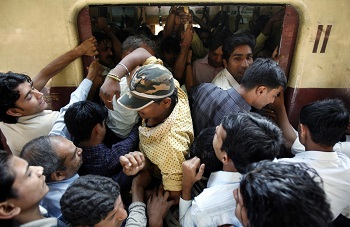 make themselves scarce after a few stations. On my left there were a couple of men, who I presume were having a heated discussion about cricket. Since this is my story, I am going to presume that one had been hit by a stone in the head and then had picked up the same stone to chase away the guy who threw it at him. Who they were and what they were talking about is of no interest to me, but it must have been pretty intense since they were soon joined by more people, killing my interest, his conversation or any hope that I might have had of getting a seat in his turf.
make themselves scarce after a few stations. On my left there were a couple of men, who I presume were having a heated discussion about cricket. Since this is my story, I am going to presume that one had been hit by a stone in the head and then had picked up the same stone to chase away the guy who threw it at him. Who they were and what they were talking about is of no interest to me, but it must have been pretty intense since they were soon joined by more people, killing my interest, his conversation or any hope that I might have had of getting a seat in his turf.
I directed my powers to the other side of the compartment – I spotted eight people. A deeper stare gave in to the fact that six of them belonged to one family and the other two were unrelated old men. By the way the family had made themselves comfortable (snacks laid out, legs stretched etc) I could say that the family was going till the last station. Now, my only hope was to bank on the old couple – but isn’t it how the world works, somebody old gets off the life’s train and you take their place in this world. But I was there to win – I carefully rooted myself in a position such that no matter which old guy gets up, it would be me who gets their spot. At that time I completely disregarded any other passengers around me – man, woman, old or child, all I cared was about that one seat which would make my journey a little more comfortable than the rest of the people there. And it did happen – I swung into action the moment I saw one of the old guys merely straightening his back, and in action did I stay until I had replaced his bony behind with my cushy bum in that sweet spot on the seat. This to me was a victory against all those people who were trying to impart ‘death by squeeze’ to me till a minute ago. Even though they might not have thought of this as a battle, I had won.
As I began enjoying the sweet reward of my battle- a long journey with a place to sit, my favourite music to get lost in and a multitude of mute movies to watch which strangers around me were building on every passing moment. For example, the movie right next to me was about the family that was definitely doing till the last station. The characters – the father- with more grey on his head than should have been, the mother – a woman with a motherly look (one that we all know far too well, yet is impossible to describe in words), the son – a typical young brat, jumping around standing with his face against the window somehow enjoying the hot humid air against his face, and the daughter.
 The daughter looked out of place in this typical family – she just sat still looking outside the window, lost somewhere. There were two more people in the same alleged family, and since there was nothing typical about their behaviour, I assumed that were just distant relatives of this tight knit family. The ride was just other chatty ride for the family, but for the girl, it seemed to me, this ride was out of the ordinary. The chatter of the family seemed to annoy her and she quietly exchanged seats with her father to be next to her mother.
The daughter looked out of place in this typical family – she just sat still looking outside the window, lost somewhere. There were two more people in the same alleged family, and since there was nothing typical about their behaviour, I assumed that were just distant relatives of this tight knit family. The ride was just other chatty ride for the family, but for the girl, it seemed to me, this ride was out of the ordinary. The chatter of the family seemed to annoy her and she quietly exchanged seats with her father to be next to her mother.
Now, I could see her face. A girl in her early 20’s, but with an expression that carried the sadness of decades. Just like I could hear nothing but the music, even she heard nothing but the silence within. She just sat there an expression so blank, that you would dare not uncover what it hid beneath. She had her kerchief pressed against her eyes, which when she removed made me realise that she had been sobbing. Her eyes were bloodshot and her cheeks moist with tears. Sitting next to her mother, she sobbed the whole time, not making a scene, not talking to anyone, she just sat there and silently communed with her mother through her eyes. The mother also did not speak for the entire duration of the journey, but she held her hand and then looked at her daughter with those reassuring eyes, which said far more than any kind words ever could.
I don’t know why the girl was sad. But I could not stop thinking knowing fully that I’ll never know the answer. Maybe she had a bad husband who didn’t treat her well or worse, beat her up, or she could have done poorly in her exams or lost her job. I don’t know what it was, but it has been almost five days since this happened and I can’t get it out of my head. That girl in the train keeps coming back to me.
That girl in the train…that girl whose mother holding her hand made me think about my own mother. That girl with a broken dream. That girl who let go of her emotions during that journey. That girl who sat there amidst this mad city running around her still life at that moment. That girl with the stillness in her eyes that hid the storm in her head. That girl represented the Mumbai which as I see, after all the hardships every day, picks itself up and moves on. Moves on to dream some more and work towards making some of them come true and trade off some in the race to find that comfortable spot where they can stand under their own handlebar.
Siddharth Shekhar is a newbie to Mumbai, still trying to find his way around the city with a notepad and a camera. This story is based on a real-life incident.
(Pictures courtesy www.mamamia.com.au, favim.com, au.ibtimes.com)

